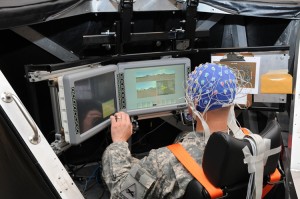A Three-train Disaster in India
Tuesday, June 6th, 2023
Rescue workers aid in the aftermath of a three-train crash that killed 275 people and injured more than one thousand in India’s Odisha state on June 2, 2023.
Credit: National Disaster Response Force
On Friday, June 2, 2023, a high-speed passenger train collided with a parked freight train in Balasore in India‘s Odisha state. The resulting wreck was India’s worst rail accident in decades, killing at least 275 people and injuring over one thousand. After the passenger train hit the parked freight train, many carriages derailed. Those cars were then hit by another passenger train passing the wreckage. The accident has raised questions about the safety of India’s railways.
Nearly 2,200 people were aboard the two passenger trains involved in the crash. The Coromandel Express was traveling from Kolkata to Chennai at 80 miles (127 kilometers) per hour when it veered onto a loop instead of heading straight. The Coromandel Express hit a parked freight train at Bahanaga Bazar station near Balasore. The crash derailed several carriages, which landed on a parallel track. The Howrah Superfast Express was traveling from Yesvantpur to Howrah when it ran into the derailed carriages from the Coromandel Express.
Rescue workers searched for passengers and pulled injured people from the wreckage Friday night and Saturday. Many people were rushed to crowded hospitals nearby. On Saturday, they began repairing the train tracks and clearing the damaged carriages from the area. The train service resumed operation on Monday evening, allowing some family members to travel to the site to claim loved ones. As of Monday, only 170 of the deceased passengers had been identified.
Representatives from India’s Railway Board reported the trains were traveling at appropriate speeds, and a signaling error most likely caused the crash. Both passenger trains received a green signal, allowing them to proceed on the route. Prime Minister Narendra Modi visited the wreck scene and vowed a lengthy investigation and harsh punishment for anyone found guilty in the accident. Prime Minister Modi has worked on adding new trains to the network, including an innovative bullet train connecting Mumbai and Ahmedabad.
More than 20 million passengers ride India’s rail network every day. With more than 13,000 trains, the rail network is one of the largest in the world. Many people are blaming poor upkeep on older trains and infrastructure for the accident. While serious train accidents have declined in recent decades, some audits suggest that spending on safety measures has also decreased. Reports show that India used to record an average of 475 derailments a year. Today, India averages around 50 derailments a year. Until 2017, India recorded a minimum of 100 train-related deaths a year. While the numbers show a safety improvement, many trains still in operation do not have advanced safety technology to avoid disasters. The Indian government spent almost $30 billion on the rail network in the last calendar year. Critics suggest most of this allocated money has been used to improve speed and comfort, not general safety.
India’s deadliest train disaster occurred on June 6, 1981, almost 42 years ago exactly. On that day, an overcrowded passenger train plunged into the Bagmati River while crossing a bridge in Bihar state. The accident killed an estimated 800 people. However, the investigation never determined the cause of the accident or the final death count.













